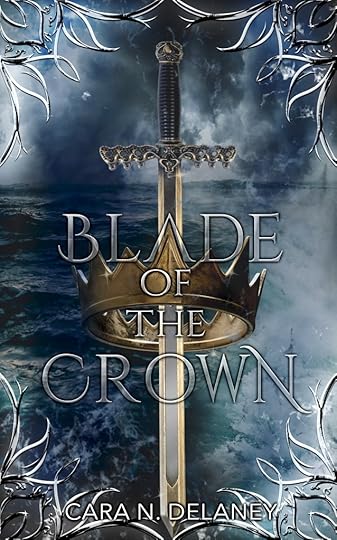Publishing woes? Three ways to try and fix low book sales
This one’s gonna be uncomfortable. We’re wading back into the murky waters of not just writing, but actually selling books. I see a lot of indie authors talk about low – or no – sales and/or page reads (for us Kindle Unlimited folks). A lot of the time, when I check out the books in question, they’ll have a few things in common that can seriously hinder sales. Let’s talk about three of those things and how to fix them.
The first one is, unfortunately, both the hardest one to redo and the most important one to get right. Your cover. There is no way around that – your cover must both look professional and clearly signal the genre of the book. And here is where a large amount of indie authors stumble already. Maybe they made the cover themselves, and it shows. Maybe they paid for a professional design, but didn’t do their research, so the cover does not match the story or the genre. Whatever the case, if you want to have any chance at all at competing in the indie market, the cover needs to be near perfect. At the very least, you need to know the rules if you do decide to break them – and accept the risk that comes with that. So when it comes to covers, you need to do your research, and if your design skills are not up to par, save up and pay a pro. That’s it. That’s the secret. The cover is the first thing a reader will see, and you will lose a large chunk of people then and there. Don’t make that number higher than it needs to be.
And for the love of god, don’t use generative AI as a “cheap alternative”. Ethical issues aside, readers can tell, it’s uncanny, and you’ll end up on people’s “no buy” lists in no time. If you want to build a sustainable career, genAI is not the play.
The second thing that often needs fixing is the blurb. Yes, I know. Blurb writing is hell and we’re all in it. Doesn’t matter. If your cover is the bait that lures a potential reader to the book’s page, the blurb is the hook. Literally, actually – a blurb needs a strong hook, and many lack that. Sometimes just visually – format your blurbs, people, don’t just whack the raw text in there – but often in terms of content. A lot of authors err on the side of vagueness, out of a misguided fear of “spoiling the story”. Ignore that urge. The end of the first act is usually where your hook comes in, and that’s what’s going to make readers interested. So spoil that first act. Vague allusions to maybe cool things in the future won’t cut it here. Again, do your research. Look at what the bestsellers in your genre do, adapt it to your book, and emulate it. If you can’t do it yourself, there are professionals who will do it for you. Writing marketing copy is its own beast and, like graphic design, not everybody is good at it, so know your limits, and pay for professional assistance where you can’t deliver.
Lastly, and this is one that I don’t have direct access to, but know from talking to many an author – keywords and categories. In short, these are how you get the drive-by readers to see your book, so they get a chance to be seduced by the cover and blurb in the first place. If you do what most authors do, just pick some broad categories for mass appeal, add some single-word keywords, and think that’s it – you’ll be drowned out by the people who are better at this than you are.
Choose your categories with care, especially on platforms that don’t give you any keywords to work with. Don’t just put your book into the giant pool of “romance”. Put it in Romance->Fantasy->Bisexual (or applicable equivalent) to actually find your target audience, and not sink to the bottom in a sea of all romance. Depending on how many options you get, balance the broad and the specific.
The same rule applies to keywords. For KDP authors, check out this guide if you haven’t already. Here, too, you want to balance casting a broader net with honing in on your specific target audience. Specifically on Amazon, this is your bread and butter. On platforms that don’t allow keywords, you need to be more creative, but it’s generally possible to add a few to your blurb. Don’t overdo it – but if a platform only offers a “Romance” category with no sub-categories, feel free to add “A new bisexual fantasy romance from the author of [your previous work]!” to gain some visibility and hit those more specific searches. If you can work some of them into the actual blurb itself, all the better. So instead of “Once Carrie returns to Haddenfield…” make that “Once Carrie returns to the small town of Haddenfield…” to hit that small town romance trope. You’ve got options here, don’t waste them!
Bonus point: Check your book’s price. We’re free to charge whatever we want for our work, but there are certain price ranges which readers are comfortable with. I’m not saying you should start a price limbo – but when the vast majority of books in your genre cost between $3 and $5, charging $9.99 for an ebook will probably get you discarded by most readers immediately.
There you go, three (and a half) things to consider when you’re faced with a lull in sales. These are not silver bullets – you still need to have a good book to sell, and eventually, sales will taper off naturally for most books. That’s when you need to come out with your next book, and keep building that momentum. Remember, publishing is a marathon, not a sprint. But fixing those three aspects of your presentation and back-end will help more than you might realise, so get on it!
– Cara
BLADE OF THE CROWN is available in paperback and through Kindle Unlimited! Get swept away with a princess and her royal guard as they find themselves stranded on a strange island, trying to find their way home – and into each other’s arms.




